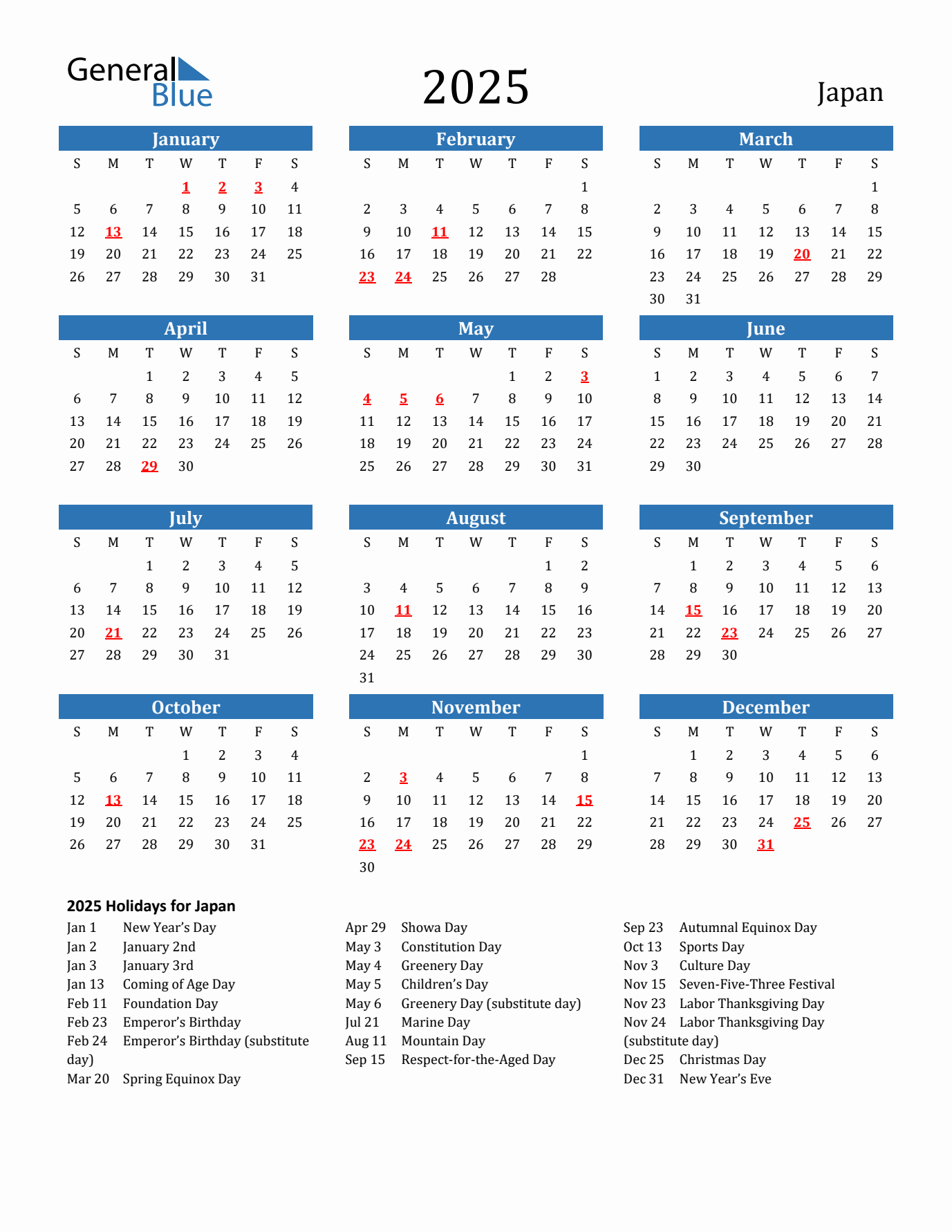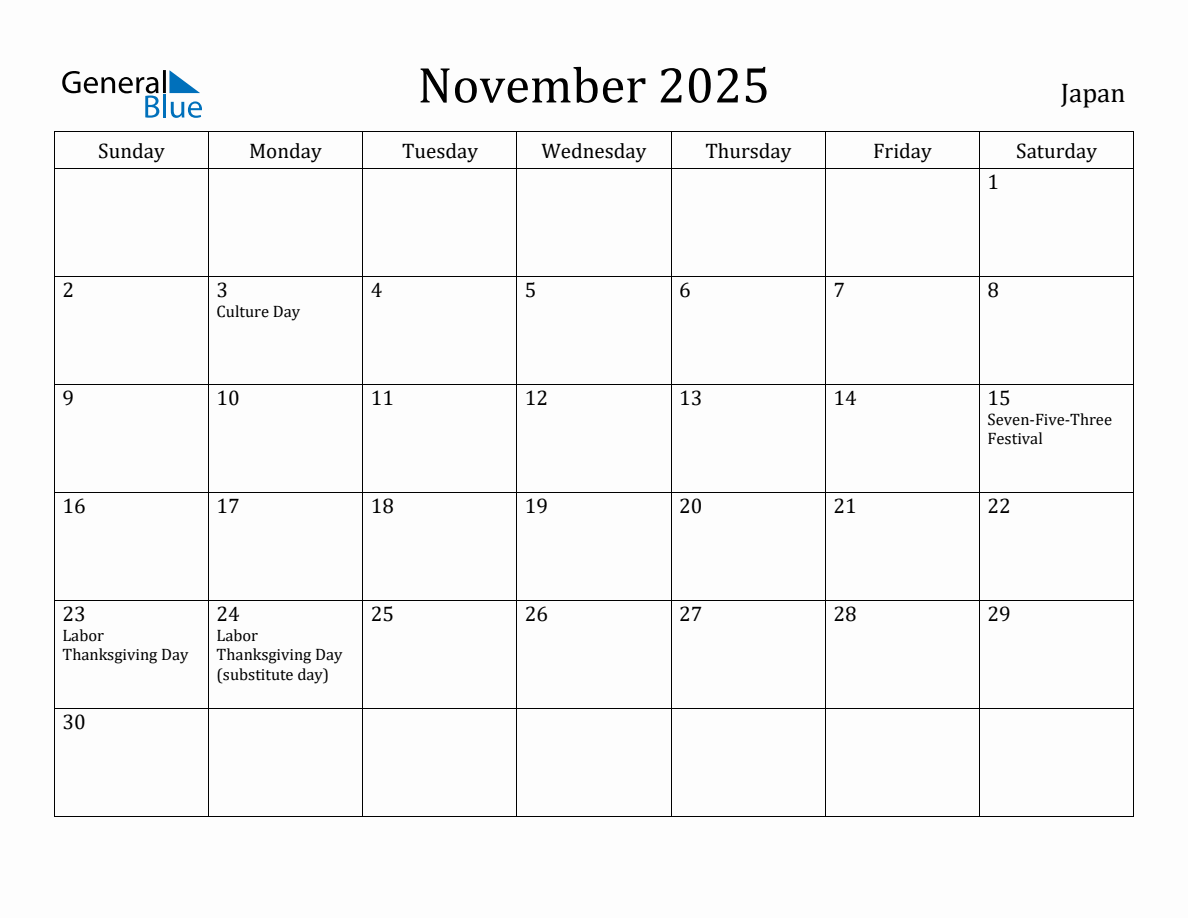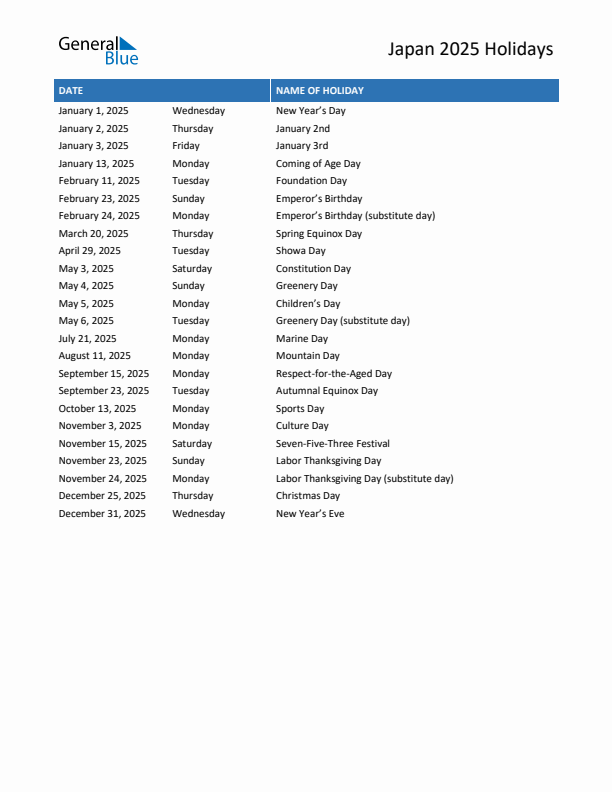National Foundation Day in Japan
When is Foundation Day in Japan?
Foundation Day in Japan is on February 11, 2026. It falls on Wednesday.
How many days until Foundation Day in Japan?
There are 98 Days left until Foundation Day in Japan.
Is Foundation Day a public holiday in Japan?
National Foundation Day or known as ‘Kenkoku Kinen no Hi’ by the Japanese people, is a national holiday observed every 11th of February of every year in Japan. This day is primarily celebrated to commemorate the foundation of the nation and the beginning of the Imperial line by Emperor Jimmu, the first Japanese ruler.
Origin of National Foundation Day
Aside from Japan, many countries around the globe actually observed the celebration of the foundation of their own nations. United States, for instance, has July 4th to celebrate their Independence. Australia has Australia Day which is observed on the 26th of January. Even Canada has Canada Day occuring every 1st of July. These countries and many others, have designated a specific date to celebrate their nation’s pride. For Japan, it falls on the 11th of February. Yet, the country’s celebration on this particular day is not analogous with the others. Somehow, this is one of the reasons why the country is considered unique. With the celebration of the National Foundation Day, government offices, schools, banks, and several other companies would close down for the holiday. However, many establishments (primarily in the business industry) like shops, restaurants, etc. would remain open for the public.
How did National Foundation Day begin?
The National Foundation Day (sometimes referred to as Empire Day) began when Emperor Jimmu, considered a descendant of the Japanese sun goddess, Amaterasu (by the Japanese mythology) ascended the throne and became the first Emperor and ruler in the country. Originally, this day was celebrated on the same day as the New Year’s when Japan used to follow the Chinese Lunar Calendar. However, at that time, the National Foundation Day was not strongly felt since it was outweighed with the celebrations prepared for the New Year’s Day. Because of this, on 1873 (during the Meiji Period), the Japanese government decided to move the holiday on February 11, for the people to realize the essence of its celebration. It was said that the reason why it was moved specifically on this date was because this was also the date of the enthronement of Emperor Jimmu. As stated in the earliest Japanese history records, the enthronement was dated back in February 11 660 BC.
From Kigensetsu to National Foundation Day
“Kigensetsu” was what the National Foundation Day is originally called. It means ‘Festival of the Accession of the First Emperor and the Foundation of the Empire’. By 1873 (when Japan switched from using the Chinese Lunar Calendar to the Gregorian Calendar), aside from changing its date of celebration from the Lunar New Year’s date to February 11th, Mutsuhito, who was the reigning Emperor at that time (Meiji Period), has also officially changed its name from ‘Kigensetsu’ to the ‘National Foundation Day’ or ‘Kenkoku Kinen no Hi’ in the Japanese language, which is then observed up until the present.
National Foundation Day Traditions in Japan
In the early years, prior to the occurrence of the Second World War, the celebration of the National Foundation Day is actually one of the celebrations the Japanese look forward to every year. This is the day wherein one can show his/her love, respect, and patriotism not just to the country but most especially to the Emperors themselves whom the Japanese had considered as living gods. The holiday showcases several events that were both fun and exciting. Large parades with people waving the Japanese flags could be seen everywhere. Fireworks, parties, athletic competitions, and even public reading of poems were also arranged. Other Japanese would even go out of their way and organize a free banquet just for this celebration.
Kowtow
In the ancient times, emperor-worship has been practiced in Japan. Thus, it is customary for the Japanese during the celebration of the National Foundation Day to kowtow. ‘Kowtowing’ (which means kneeling and touching the forehead to the ground as a sign of worship and deep respect) is one of the main highlights of the events. The people would kowtow to a portrait of the emperors, whom they considered as divine beings. Patriotic speeches were also done by the important figures in the country along with the singing of the national anthem. Basically, on this day, the whole country observes the holiday, from the gatherings in the local or small villages, to those gatherings in the bigger cities of Japan.
Old Celebration vs. New Celebration
The country used to celebrate the National Foundation Day with more vigor, passion, and grandeur. However, this was altered when the holiday was nullified following the events of the World War II. When Japan surrendered to the Allied Forces back in 1945, Emperor Hirohito, who’s reigning at that time, had to give up his control over the country and had officially stated to the public about the false conception they’ve had that the emperor is divine/ a living god. Thus, with the occurrence of the Second World War, the National Foundation Day, which was celebrated mostly in reference to the country’s emperors, has been abolished. Although the holiday was actually reinstated in 1966, it has gradually lost its significance over time. In contrast with the old celebration, the current practices done on this day paled in comparison to how the Japanese used to honor this holiday in the olden days.
Unlike the several festivities arranged in the past, few events are only observed during the celebration of the National Foundation Day in the recent years. The most common include the raising of the Japanese National Flags and the parades which are usually held in Tokyo’s Omotesando Dori. Those who would participate to these parades would typically bring the national flag, a mikoshi (a portable shrine in English), or a miniature temple with some customized decorations on it. A small group of people from across the country would also visit the Imperial Palace where the emperor resides, to pay their respects to the Emperor himself as someone who’s considered the head of the state. Other than that, there are no other public celebrations done, no customary foods served, and even the attention from the mass media is nonexistent. The celebrations done by the modern Japanese on this holiday are quite restrained since it is believed that going out of your way to celebrate the National Foundation Day in the modern times is like reverting back to the old ways of embracing the emperor-worship practice. Hence, this is the reason why at present, majority of the Japanese treat this holiday only as like a family day or a special day-off from work instead of openly expressing their nationalism and patriotism.
| Year | Date | Day | Holiday |
|---|---|---|---|
| 2026 | February 11 | Wednesday | Foundation Day |
| 2027 | February 11 | Thursday | Foundation Day |
| 2028 | February 11 | Friday | Foundation Day |
| 2029 | February 11 | Sunday | Foundation Day |
| 2030 | February 11 | Monday | Foundation Day |
| 2031 | February 11 | Tuesday | Foundation Day |
| Holiday | Date |
|---|---|
| Seven-Five-Three Festival | November 15, 2025 |
| Labor Thanksgiving Day | November 23, 2025 |
| Christmas Day | December 25, 2025 |
Download or print free 2025 calendar which includes the list of holidays in United States. Free holiday calendar templates in more than 130 countries are provided in PDF, Excel, and Microsoft Word format. For those who like to get a calendar that starts on Monday, we also have ISO calendar.
The November 2025 monthly calendar for the United States shows the holidays for the month, which is helpful in planning schedule and events in reference to the upcoming holidays in the US. It is available in PDF, Microsoft Word and Microsoft Excel formats. You may select your preferred orientation and preferred start of week since we have Monday start calendar or Sunday start calendar.
If you are looking for just a list of holidays in the United States for the year 2025, we have that available in PDF, Word and Excel formats. This can be helpful for those who like to keep track of the holidays, be it for travel, work or any other purposes. It is free to use, just like the rest of our templates. You can choose from Letter, Legal and A4 paper sizes.


